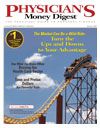Publication
Article
Physician's Money Digest
Realize Mutual Funds Have Three Faces
Author(s):
From the questions I getasked, it seems that manyinvestors do not fully understandmutual funds—especiallythe differences amongthe three major categories they come in:open end, closed end, and exchangetraded. Because most people invest inboth stocks and bonds almost exclusivelythrough mutual funds, it is importantto fully understand the characteristicsof all three types.
The Mutual Fund Concept
Leaving aside the legal structure andother complexities, a mutual fund is apool of investors' money managed byprofessional money managers followingdefined investment objectives andstrategies. Beyond the advantages ofprofessional management and the poolingof investments, there are two otherkey factors that have made mutualfunds the preferred investment vehicle.
First, mutual funds themselves do nothave to pay any income or capital gainstaxes on their returns. Instead, they arerequired to distribute all their interestand dividend income and realized capitalgains to their shareholders in thesame year. Investors pay the taxes onthose through their own tax returns, sothere is no double taxation involved.Mutual funds could not have flourishedwithout this tax treatment. Second, withsome minor exceptions and restrictions,investors can add money to or withdrawmoney from mutual funds at least oncea day. Otherwise mutual funds wouldnot be as popular or convenient.
The Three Types
Answer:
How do the three major types ofmutual funds differ from one another?Primarily in the way they handlemoney additions and withdrawals.
In open-end mutual funds—by far themost popular variety—all new moneygoes directly into the fund, and all withdrawalscome directly out of the fund.Your money goes in or comes out at theend-of-day net asset value, which,stripped of all technicalities, means youbuy into the existing holdings of the fundat their fair market value at the end of theday, and you cash out at the same price.But you can buy or sell only once a day.
In closed-end mutual funds, individualinvestors do not directly deal withthe fund. They buy shares from and sellshares to other investors in the marketat prices determined by supply anddemand. Because of that, they can buyor sell their fund shares anytime duringthe trading hours, but the price may besignificantly different from the value ofthe securities in the fund itself. So aninvestor may suffer a loss on a sale evenif the value of the stocks and bonds inthe fund have gone up.
In a way, exchange-traded funds(ETFs) represent the best of both worlds.They are similar to closed-end funds inthat individual investors can buy or sellshares anytime during the trading hoursbecause they have to buy or sell sharesfrom other investors in the market. Butwhat sets them apart from closed-endfunds is that ETFs have a built-in arbitragemechanism that generally keepsthe share price in the market close to thevalue of the securities in the fund. In thisimportant dimension, ETFs are similarto open-end funds because investors arelikely to get a fair price for shares at alltimes, except during a market crisis.
Make the Right Choice
Because of the uncertainty aboutprice, you should generally stay awayfrom closed-end funds unless you arevery knowledgeable. This is, in fact, oneplace where truly knowledgeable investorscan sometimes find great bargains.
As for choosing between ETFs andopen-end funds, keep in mind that, atleast for now, all ETFs are index funds.So for index funds, it is often a toss-upbetween an ETF and a similar open-endindex fund. But remember that on WallStreet success always begets excess, andETFs have fallen victim to this phenomenon.ETFs based on designer indexesare springing up like wild flowers. Makesure you fully understand the underlyingindex before buying an ETF based on it.
The bottom line is, for activelymanaged funds, open-end funds arestill the only game in town. For indexfunds, ETFs offer a wider variety interms of underlying indexes, but onlypurchase an exotic variety if you fullyunderstand it.
Chandan Sengupta, author of The OnlyProven Road to Investment Success (JohnWiley; 2001) and Financial Modeling UsingExcel and VBA (Wiley; 2004), currentlyteaches finance at the Fordham UniversityGraduate School of Business and consults with individualson financial planning and investment management. He welcomesquestions or comments at chandansen@aol.com.
